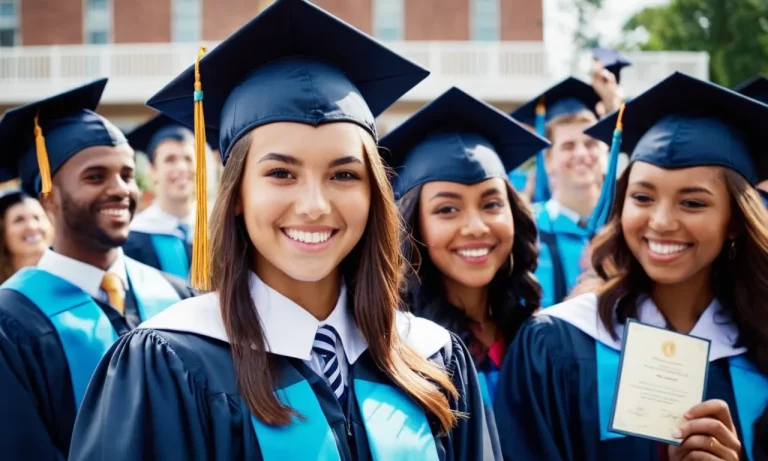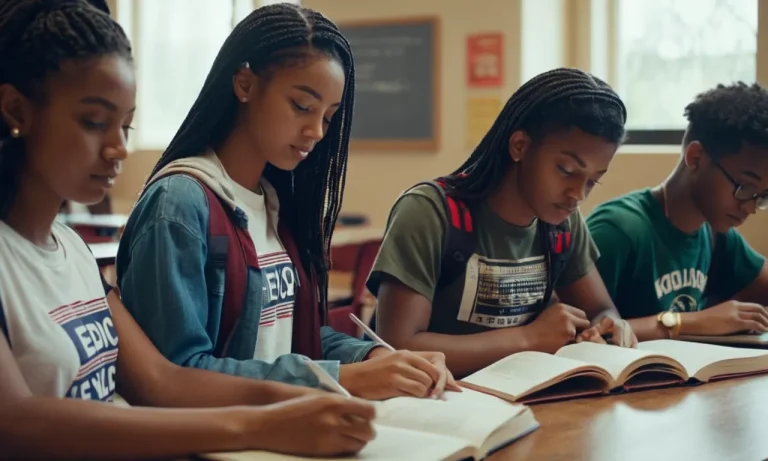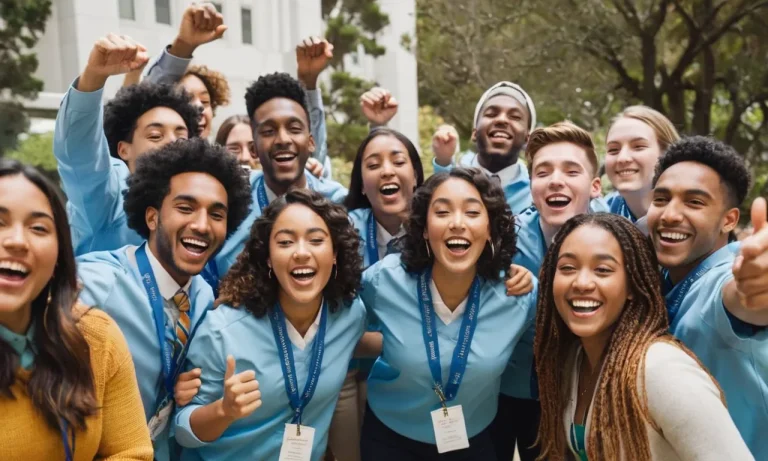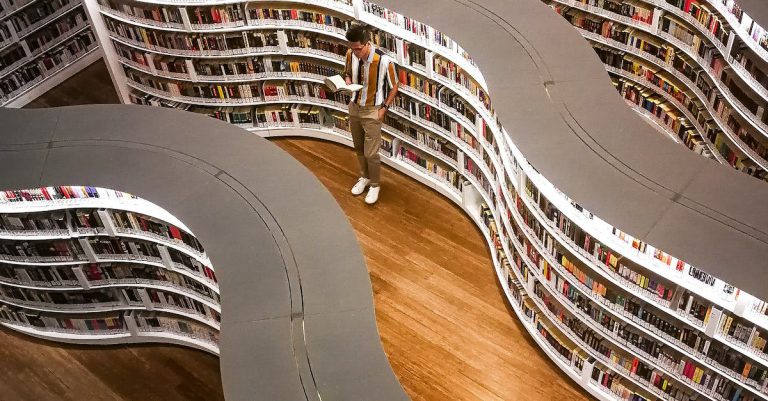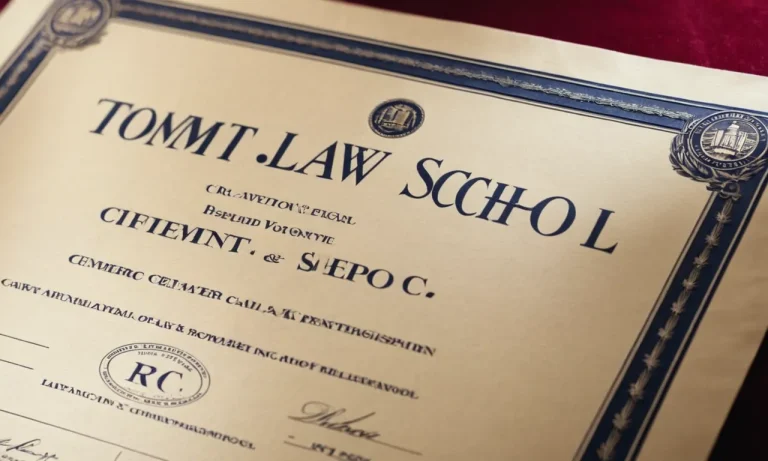In an era where the value of education is constantly debated, the question ‘Is school a waste of time?’ has become a contentious topic. As students, parents, and educators grapple with the ever-evolving demands of the modern world, this inquiry strikes at the core of our educational system.
If you’re short on time, here’s a quick answer to your question: School is not a waste of time, but it requires a critical examination of its purpose, methods, and relevance to prepare students for the challenges of the 21st century.
In this comprehensive article, we will delve into the multifaceted aspects of this debate, exploring the arguments for and against the effectiveness of traditional schooling. We will examine the role of schools in shaping individuals, imparting knowledge, and fostering essential skills.
Additionally, we will investigate alternative educational approaches and the potential for reform within the existing system.
The Purpose of Education: Beyond Academic Knowledge
Education is often perceived as a means of acquiring academic knowledge, but its true purpose extends far beyond the confines of textbooks and classrooms. While academic excellence is undoubtedly important, the role of education in shaping well-rounded individuals who can thrive in an ever-changing world cannot be overstated.
🌍
Developing Critical Thinking and Problem-Solving Skills
One of the fundamental aims of education is to cultivate critical thinking and problem-solving abilities. In today’s rapidly evolving world, the ability to analyze information, think critically, and find innovative solutions is invaluable.
According to a study by ETS, individuals with strong critical thinking skills are more likely to succeed in both academic and professional settings. By fostering these skills, education empowers students to navigate complex challenges and make informed decisions. 💡
Fostering Creativity and Innovation
Creativity and innovation are essential drivers of progress in every sphere of life. Education plays a crucial role in nurturing these qualities by providing an environment that encourages curiosity, exploration, and the freedom to think outside the box.
According to a report by McKinsey, companies that embrace creativity and innovation tend to outperform their peers in terms of revenue growth and profitability. By encouraging students to think creatively and embrace new ideas, education lays the foundation for a more innovative and prosperous society.
💡💻
Building Character and Social Competencies
Education is not just about imparting knowledge; it also plays a vital role in shaping character and developing social competencies. Through interactions with peers, teachers, and extracurricular activities, students learn essential life skills such as communication, teamwork, empathy, and emotional intelligence.
These skills are invaluable in both personal and professional contexts, enabling individuals to navigate social situations effectively and build meaningful relationships. As highlighted by the Collaborative for Academic, Social, and Emotional Learning (CASEL), social and emotional learning (SEL) programs in schools have been shown to improve academic performance, increase positive behaviors, and reduce emotional distress.
😊👍
Addressing the Criticisms: Outdated Curricula and Teaching Methods
One of the major criticisms leveled against traditional education systems is the perceived lack of relevance of the curricula and teaching methods employed. In an ever-evolving world, some argue that schools are failing to keep pace with the demands of the modern era, leaving students ill-equipped for the challenges and opportunities they will face.
Relevance of Traditional Subjects in the Modern World
Critics often question the relevance of certain traditional subjects, such as literature, history, and the arts, in a world dominated by technology and data-driven industries. However, proponents argue that these subjects foster critical thinking, creativity, and cultural awareness – skills that are highly valued in the modern workforce.
According to a study by the Association of American Colleges and Universities, employers highly value the ability to think critically, communicate clearly, and solve complex problems – skills that are honed through the study of liberal arts subjects.
Incorporating Technology and Experiential Learning
Another criticism is that traditional teaching methods, which often rely heavily on lectures and rote memorization, fail to engage students and prepare them for real-world challenges. Advocates for educational reform argue for the integration of technology and experiential learning opportunities to better align with the changing needs of the workforce.
According to a report by the New Classrooms Innovation Partners, the strategic use of technology in the classroom can significantly improve student engagement and academic performance, particularly for disadvantaged students.
Tailoring Education to Individual Needs and Interests
Critics also argue that the one-size-fits-all approach of traditional education fails to cater to the diverse needs and interests of individual students. Proponents of educational reform advocate for personalized learning experiences that allow students to explore their passions and strengths.
According to a study by the MDRC, students in personalized learning environments showed significant academic gains compared to their peers in traditional classrooms. 👏😊
While the criticisms of outdated curricula and teaching methods are valid, it’s important to recognize the ongoing efforts to reform and modernize education systems. By embracing technology, experiential learning, and personalized approaches, schools can better prepare students for the challenges and opportunities of the 21st century.
Ultimately, the goal should be to strike a balance between preserving the enduring value of traditional subjects and adapting to the ever-changing needs of the modern world. 🎉
Alternative Educational Approaches: Exploring New Possibilities
As the traditional school system faces increasing scrutiny, many parents and educators are exploring alternative educational approaches that cater to the unique needs and learning styles of individual students.
These approaches offer fresh perspectives and innovative methods that challenge the conventional “one-size-fits-all” model of education.
Homeschooling and Unschooling
Homeschooling, where parents take full responsibility for their child’s education, has gained significant popularity in recent years. According to data from the National Center for Education Statistics, the number of homeschooled students in the United States has nearly doubled in the last two decades, reaching an estimated 3.7% of the school-age population in 2019.
Unschooling, a subset of homeschooling, takes a more child-led approach, allowing learners to pursue their interests and learn through natural life experiences. Proponents of these methods argue that they foster self-directed learning, personalized curricula, and stronger family bonds.
However, critics raise concerns about socialization and the potential lack of access to specialized resources.
Montessori and Waldorf Education
Montessori and Waldorf education are two well-established alternative approaches that emphasize hands-on learning, individualized instruction, and a holistic view of child development. Montessori schools, inspired by the teachings of Maria Montessori, use specialized materials and a prepared environment to encourage self-directed learning and independent exploration.
Waldorf schools, based on the principles of Rudolf Steiner, integrate arts, nature, and imaginative play into a developmentally appropriate curriculum. These methods aim to nurture creativity, self-discipline, and a love for learning.
According to Montessori statistics, there are over 22,000 Montessori schools worldwide, serving more than 4 million students. Waldorf education, while smaller in scale, has a strong presence in over 60 countries.
Online and Distance Learning
The rise of technology has paved the way for online and distance learning opportunities that transcend geographical boundaries. Online schools, virtual academies, and massive open online courses (MOOCs) offer flexible and accessible education options for students of all ages.
These platforms leverage digital tools, multimedia resources, and virtual classrooms to facilitate learning anytime, anywhere. According to a report by IBISWorld, the online education industry in the United States is projected to grow at an annualized rate of 9.8% between 2018 and 2023, reaching a market size of $21.2 billion. While online learning provides convenience and personalization, concerns about social isolation, technological barriers, and quality assurance persist.
As the world continues to evolve, these alternative educational approaches present exciting possibilities for reimagining the learning experience. Whether it’s homeschooling, Montessori, Waldorf, or online learning, each approach offers unique strengths and challenges.
By embracing innovation and tailoring education to individual needs, we can unlock the full potential of every learner and create a more inclusive and engaging educational landscape. 🎓💡
Reforming the System: Strategies for Effective Change
Curriculum Redesign and Interdisciplinary Learning
One of the key strategies for reforming the educational system is to redesign the curriculum to foster interdisciplinary learning. The traditional approach of teaching subjects in isolation often fails to prepare students for the real-world challenges they will face.
By integrating different disciplines and encouraging students to make connections across subjects, we can equip them with a more holistic understanding of complex issues and develop their critical thinking skills.
According to a study by the Edutopia, interdisciplinary learning has been shown to improve student engagement, retention, and overall academic performance. It also better prepares students for the collaborative nature of the modern workplace.
For example, a project that combines science, math, and language arts can teach students how to effectively communicate scientific concepts, analyze data, and present their findings in a clear and compelling manner.
To implement this approach, schools can collaborate with educators, subject matter experts, and industry professionals to develop integrated curricula that address real-world problems. Additionally, professional development opportunities should be provided to teachers to help them effectively facilitate interdisciplinary learning experiences.
Teacher Training and Professional Development
Effective teacher training and ongoing professional development are crucial for fostering a high-quality educational system. Teachers play a pivotal role in shaping the learning experiences of students, and it is essential to equip them with the necessary skills, knowledge, and resources to excel in their roles.
According to a report by the Learning Policy Institute, effective professional development programs should be content-focused, incorporate active learning, support collaboration, use models of effective practice, provide coaching and expert support, offer opportunities for feedback and reflection, and be of sustained duration. These programs can help teachers stay up-to-date with the latest pedagogical approaches, subject matter knowledge, and educational technologies.
Furthermore, teacher training should emphasize the importance of culturally responsive teaching practices, which acknowledge and value the diverse backgrounds and experiences of students. By fostering an inclusive and equitable learning environment, teachers can better engage and support all learners, regardless of their cultural, linguistic, or socioeconomic backgrounds.
Fostering Collaboration between Schools, Families, and Communities
Effective education requires a collaborative effort from various stakeholders, including schools, families, and communities. By fostering strong partnerships and open communication channels, we can create a supportive ecosystem that nurtures student growth and achievement.
Schools can actively engage families by providing opportunities for involvement in decision-making processes, organizing events and workshops, and establishing clear communication channels. According to a study by the Edutopia, family engagement has been shown to improve student attendance, behavior, and academic performance.
It also helps build a sense of community and shared responsibility for student success.
Additionally, schools can collaborate with local organizations, businesses, and community groups to create enrichment programs, internships, and real-world learning opportunities for students. These partnerships can provide valuable resources, mentorship, and exposure to diverse perspectives and career paths.
By fostering a strong connection between schools, families, and communities, we can create a supportive and nurturing environment that empowers students to thrive academically, socially, and emotionally.
Conclusion
The debate surrounding the value of school is a complex and multifaceted one, with valid arguments on both sides. While traditional schooling has its flaws and limitations, it remains a crucial institution for imparting knowledge, developing essential skills, and shaping well-rounded individuals.
As we navigate the rapidly changing landscape of the 21st century, it is imperative to embrace a mindset of continuous improvement and adaptation within the educational system. By addressing outdated curricula, incorporating innovative teaching methods, and exploring alternative approaches, we can ensure that school remains a valuable and transformative experience for generations to come.
Ultimately, the question ‘Is school a waste of time?’ is not a binary one, but rather a call for critical reflection, open dialogue, and a commitment to creating an educational environment that nurtures the full potential of every student, equipping them with the knowledge, skills, and values necessary to thrive in an ever-evolving world.

